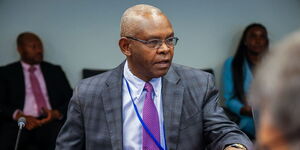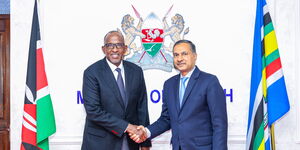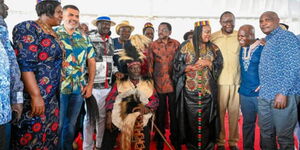It will be a battle of the wills between the two leading political coalitions Azimio La Umoja and Kenya Kwanza as lawmakers head to parliament for swearing-in and electing the speaker.
The first parliamentary sitting comes after President Uhuru Kenyatta gazetted September 8th, as the First Sitting of the National Assembly and Senate.
Electing a speaker is a detailed process which starts with the declaration of the vacancies by the National Assembly clerk, where all interested persons shall be required to duly fill out the nomination papers, accompanies by the names and signatures of 20 elected MPs.
Persons interested in the two positions have until Wednesday, September 7, at 12.30 pm to collect nomination papers, and return the nomination papers after they have been filled on the same day between 2.30 pm - 8.30 pm.
The election of the National Assembly Speaker will be conducted according to standing orders 6,7,11, 12 and 13 pursuant to the provision of the election of the speaker.
After the MPs are sworn in, they will elect the speaker on the same sitting.
The National Assembly Speaker consists of 290 elected MPs, 47 Women representatives, and 12 members of the National Assembly in accordance with article 90, to represent special interests including the youths, persons with disabilities, and workers
The numbers of elected MPs on each political formation are critical to tilt the secret vote conducted by the clerk, as both parties are fronting key figures to take up the roles.
According to the Constitution, the Speaker of the National Assembly ranks third after the President and the Deputy President.
For one to be elected Speaker of the National Assembly, one requires two-thirds support of 349 MPs (233). This is the reason why political parties and coalitions lobby their MPs before the sitting to try and whip the legislatures to vote in favour of their preferred candidate.
The Speaker is an ex-official Member of Parliament elected by other Members of Parliament pursuant to Article 106 of the Constitution, which states that.
"A Speaker for each House of Parliament, who shall be elected by that House in accordance with the Standing Orders, from among persons who are qualified to be elected as members of Parliament but are not such members; and a Deputy Speaker for each House of Parliament, who shall be elected by that House in accordance with the Standing Orders, from among the members of that House," the Standing Order states.
Azimio la Umoja has 173 MPs in the NA which gives the coalition the advantage as the Majority side of the house while the Kenya Kwanza Coalition has 160 MPs who are legally bound by their respective coalition.
Some of the key figures in both coalitions who have already applied for the National Assembly speaker position are Wipers' Farah Maalim and Kenya Kwanza's Moses Wetang'ula.
The speaker will preside over debates, serve as the spokesman of the house and ensure the house observes parliamentary rules and traditions, both written and unwritten.
Additionally, a speakers' term lasts for a period of five years.












